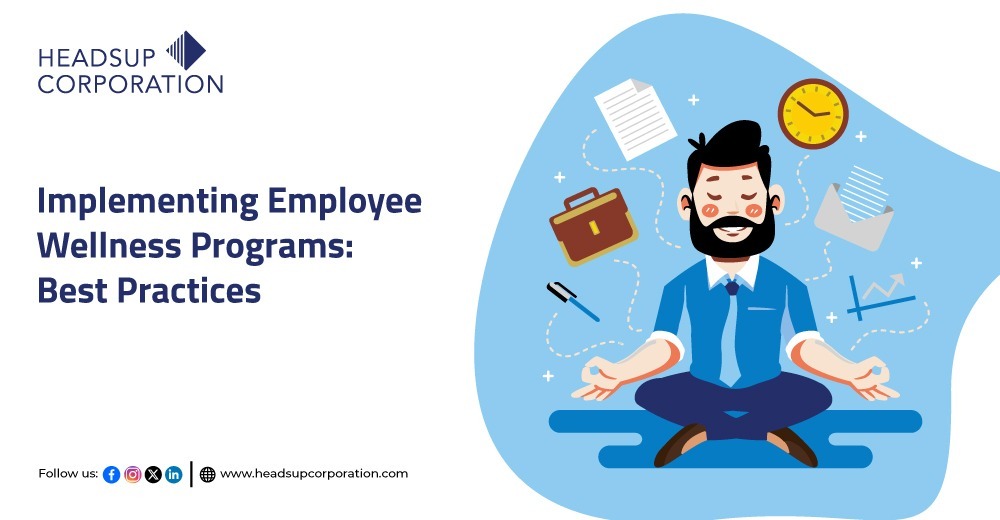
Taking care of employees’ mental well-being without burning a hole in the pocket
In the year 2020, health, safety, and well-being became top priorities for organizations across the globe. Large as well as small firms have suddenly found themselves called upon to prioritize workers’ physical and mental well-being as a matter of survival. While there is a misconception that investing in employees’ well-being is an expensive process, we are here to bust the myth. If well integrated in the system of the organization, taking care of employee well-being is easy and sustainable.
Here are a few simple ways in which you can embed well-being into the way of working and take care of your employees’:
1. Enabling worker choice & increasing flexibility
The pandemic put most of us in a more self-driven work model. It left a little to no scope of micro management or keeping a constant check on employees. With more peace of mind and free space to carry out their own work from anywhere, employees have been able to enhance their productivity and innovative quotients. This flexible way of working must continue in the post pandemic era as well, as it ensures employee well-being. For HR leaders and managers, enabling worker choice & increasing flexibility is one of the best ways to create a more hyper-personalized experience for all employees, as with the ownership of their work-schedule they can make more real-time and appropriate decisions for themselves.
So allow the employees to plan their own day, list out their own to-dos and monitor their own progress. There are many productivity tools like Evernote, Asana, Slack, and Trello, among others which can be used by organizations to enable employees to plan their work and lead a more balanced life.

2.Changing meeting norms
Too many meetings take a lot of time and eat away their focus on actually getting the work done. Strict rules and guidelines should be established to ensure that there are less number of and more meaningful meetings. Also the time for scheduling these meetings must be in working hours or sensitive to the employees’ personal commitments, including their time to rest, exercise or taking care of other responsibilities.
As most things at work are undergoing a tremendous shift, this is the best time for leaders, managers to build supportive work environments that promote employee health and well-being. Changing meeting norms can be a real game changer and all it requires is a mindset shift. They need to establish that having more number of meetings does not mean more work, rather having less number of but more productive and relevant meetings is key. Also meetings should be driven by objectives and short.

3.Introducing wellness leaves & digital detox breaks
Burnout leave, wellness leave, or a wellness day off, whatever you may call it, many large and small organizations have already added them to their leave policies to promote employee health and well-being. Flipkart, Freshworks, Springworks, Mobile Premier League, PayU India and Khatabook, among others introduced these leaves to not only encourage but also ensure that employees take a much-needed break from work.
While the trend emerged amid the pandemic and subsequent lockdown, the practice is expected to continue as the need to take time off from screen and work remains critical. If not leaves, employers can introduce digital breaks of few hours for employees to ensure they get out of their work desks and away from their laptops once in a while.

4.Respect employees’ personal space
Every employee has a “right to disconnect”. The 24/7 access to emails and texts encourages an expectation of being “always on” that can hamper employees’ well-being, increase the chances of burn-out, and ultimately effect organization’s productivity.
So avoid bombarding your employees with work, follow-ups or messages outside working hours. This behavior must start from the top and leaders should lead by example by not calling or reaching out to employees’ unless super critical also by refusing to accept not working beyond office hours.

5.Presence of an effective Employee Assistance Program
An effective employee assistance program (EAP) supports employees’ physical and emotional well-being by addressing key personal issues. The presence of EAP provides the ability to impact employees before they are in crisis. It signifies that the organization cares for their employees’ needs and wants to make genuine efforts to help them. A good EAP will include 24-hour assistance for mental health support, counseling for employees and their family, even coaching and mentoring, and self-help resources which help employees live a more healthy and happy life.







